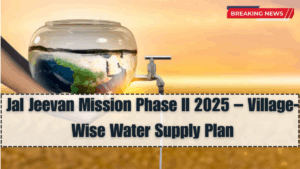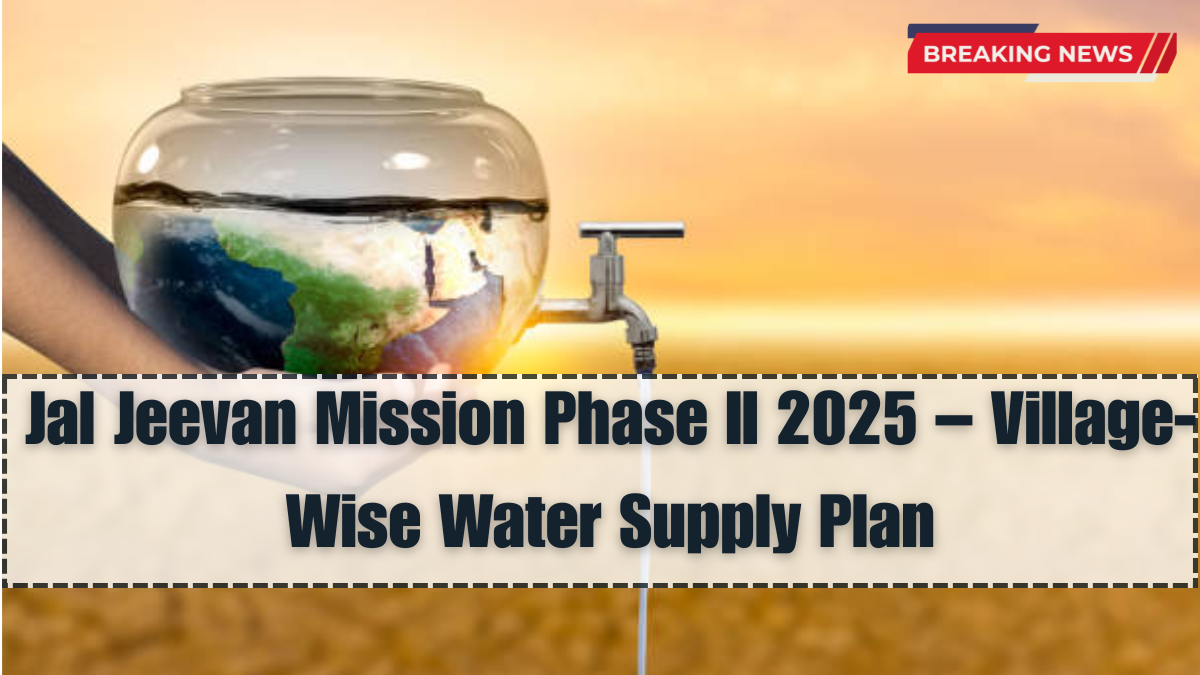The Government of India has officially launched the Village Water Supply Projects 2025 under Jal Jeevan Mission Phase II, with a renewed commitment to provide tap water to every rural household. With funding support from both central and state governments, the mission focuses on accelerating infrastructure development in water-scarce villages, ensuring clean and reliable water reaches every home through household tap connections.
The Village Water Supply Projects 2025 are a part of the larger vision of “Har Ghar Jal”, and aim to fill gaps left in Phase I by expanding coverage to remote villages, tribal hamlets, and drought-prone zones. This year’s rollout includes new pipelines, water tanks, solar-powered pump installations, and water testing systems across more than 1.5 lakh villages nationwide.

Jal Jeevan Mission Phase II – Key Objectives
The government has set ambitious and practical goals for Jal Jeevan Mission Phase II. Here are the core components:
-
100% tap water connection coverage in identified uncovered villages
-
Quality testing of water with the help of trained village-level women volunteers
-
Strengthening Village Water & Sanitation Committees (VWSCs)
-
Ensuring long-term water source sustainability (rainwater harvesting, borewell maintenance)
-
Installing IoT-based water monitoring systems for real-time tracking
The Village Water Supply Projects 2025 combine both technology and community involvement to make rural water delivery systems self-sustaining and efficient.
Villages Prioritized Under the 2025 Water Plan
Phase II is being rolled out in a targeted, district-wise manner, prioritizing regions that either had incomplete work in Phase I or face water stress. The following regions have seen the fastest progress in early 2025:
| State/UT | Key Districts Covered | Estimated Households Benefiting |
|---|---|---|
| Uttar Pradesh | Banda, Chitrakoot, Sonbhadra | 6.2 lakh |
| Odisha | Kandhamal, Kalahandi, Koraput | 4.8 lakh |
| Madhya Pradesh | Tikamgarh, Rewa, Sidhi | 5.1 lakh |
| Rajasthan | Barmer, Jaisalmer, Dungarpur | 3.9 lakh |
| Jharkhand | Dumka, Godda, West Singhbhum | 4.5 lakh |
| Assam | Kokrajhar, Darrang, Nagaon | 3.6 lakh |
| Chhattisgarh | Dantewada, Bijapur, Balrampur | 3.1 lakh |
These states have received priority due to poor water access in Phase I, difficult terrain, and dependence on seasonal water sources.
Benefits for Rural Households
The Village Water Supply Projects 2025 are not just about infrastructure—they are improving everyday lives in measurable ways:
-
Reduced burden on women and children for fetching water
-
Access to safe and contamination-free drinking water
-
Improved hygiene and sanitation at household level
-
Lower incidence of waterborne diseases
-
Time saved for education and income-generating activities
Thanks to community participation and Gram Panchayat-led monitoring, rural households are now more involved in managing their own water sources.
Role of Panchayats and Local Committees
A critical pillar of the Village Water Supply Projects 2025 is local ownership. Every village now has an empowered Village Water & Sanitation Committee (VWSC), which is responsible for:
-
Overseeing tap connection installation and water quality checks
-
Managing local contractors and workforce
-
Conducting regular feedback sessions and grievance redressal
-
Submitting usage reports via mobile tracking tools
This ensures transparency, accountability, and long-term maintenance of the systems created under Jal Jeevan Mission Phase II.
FAQs
What is Jal Jeevan Mission Phase II?
It is the 2025 rollout of the Government’s rural water scheme aimed at providing tap water to every household in villages across India.
Which villages are getting water supply under this year’s plan?
Over 1.5 lakh villages across states like UP, Odisha, MP, Rajasthan, and Jharkhand are prioritized under the current phase.
Is the water supply guaranteed to be safe and drinkable?
Yes, water quality is regularly tested by trained community volunteers and local lab centers to ensure safe consumption.
Who manages the water supply infrastructure in villages?
Village Water & Sanitation Committees (VWSCs) under Gram Panchayats manage installation, monitoring, and maintenance.
How is the project funded and implemented?
Funding is shared between the central and state governments, with execution support from district-level Jal Jeevan teams and panchayat officers.
Click here to know more.
